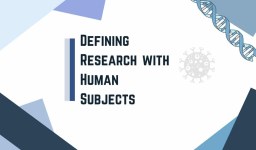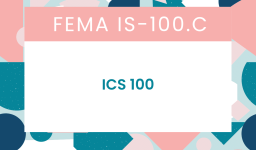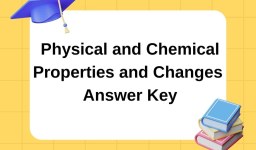- 10th Grade
- Lexile: 820
Source: Excerpt from “Frankenstein”: Chapter 10 by Mary Shelley
Assessment Answers
| Question | Answer |
|---|---|
| PART A: What is the meaning of “dissoluble” as it is used in paragraph 3 of the passage? | breakable |
| PART B: Which phrase in paragraph 3 supports the answer to Part A? | “‘bound by ties”” |
| What is the meaning of “recompense” as it is used in paragraph 8 of the passage? | make amends to |
| PART A: What primary tone is established by the words that the creature uses? | emotional distress |
| PART B: Of the following seven phrases from the passage, select THREE that convey the tone identified in | “‘detest and spurn me'” (Paragraph 3) – This phrase highlights the creature’s perception of rejection and disdain from Frankenstein and humanity, contributing to its emotional distress. “‘whom thou drivest from joy'” (Paragraph 6) – This expression reflects the creature’s sense of being forcibly excluded from happiness and well-being by its creator, enhancing the tone of emotional distress. “‘How can I move thee?'” (Paragraph 8) – This question underscores the creature’s desperation and hopelessness in trying to elicit compassion or understanding from Frankenstein, further emphasizing its emotional distress. |
| PART A: How does the interaction between the characters advance the plot in the passage? | The verbal dispute between the characters gives the man the opportunity to explain his experiences to Frankenstein. |
| PART B: Which phrase from the passage supports the answer to Part A? | “‘The sun is yet high in the heavens; before it descends to hide itself behind your snowy precipices and illuminate another world, you will have heard my story and can decide.” (Paragraph 10) |
| PART A: Which interaction is most like the one between Frankenstein and his creature? | A judge dismisses someone who continues to make a plea. |
| PART B: Which TWO quotations best support the answer to Part A? | “‘I expected this reception'” (Paragraph 3) – This quotation reflects the creature’s anticipation of rejection and dismissiveness from Frankenstein, akin to someone who expects a judge to disregard their plea. “‘I entreat you to hear me'” (Paragraph 6) – This plea from the creature to Frankenstein highlights the creature’s desperate attempt to be understood and acknowledged, similar to a petitioner or defendant pleading with a judge to be heard and considered. |
Discussion Answers
Why do you think humans have rejected the creature? How have his interactions with humans corrupted his originally kind character?
So, the reason humans have rejected the creature basically comes down to his appearance. He looks really different, kinda scary, and not at all like what people are used to. When he first comes to life, the creature isn’t mean or evil; he’s actually pretty innocent and doesn’t want to cause any trouble. He even tries to learn, understand humans, and be nice to them, like when he secretly helps that family by gathering firewood.
But here’s the thing: every time he tries to interact with humans, they freak out because of how he looks. They don’t even give him a chance to show his good side. They attack him or run away scared. Imagine how that feels, being hated and attacked just for your appearance, without anyone even trying to know who you really are inside.
This constant rejection and violence against him is what messes him up. It’s like, if the world treats you like a monster, at some point, you might start acting like one, you know? He was all alone, with no friends or anyone who cared about him, and all these bad experiences with humans turned his kindness into bitterness and anger. He started doing bad things because he was hurt, angry, and wanted Frankenstein to feel some of the pain he was feeling.
So, yeah, the creature started off as a kind being, but the way humans treated him because of his looks totally corrupted him. It’s kinda sad because it shows how judging someone based on their appearance can have really bad consequences.
In the context of the text, how does this excerpt from Frankenstein explore the limits of what humans can and should create? What should humans avoid attempting to control or create? Cite examples from the text, your own experience, and other literature, art, or history in your answer.
In “Frankenstein,” Mary Shelley dives deep into the question of what humans should and shouldn’t mess with regarding creation.
The big takeaway is that just because we can create something, doesn’t mean we should. Dr. Frankenstein gets obsessed with the idea of creating life, which is pretty groundbreaking, but he doesn’t think about the responsibilities or the consequences that come after.
For starters, Dr. Frankenstein creates the creature and then totally bails on him because he’s freaked out by what he made. This shows the first big no-no: creating life without thinking about how you will take care of it and what it will do in the world. It’s like the story is telling us there are limits to our control over what we create.
Once the creature is alive, he has his own thoughts, feelings, and experiences that Frankenstein didn’t plan for or even understand.
An example from our world is like when scientists talk about cloning or AI (Artificial Intelligence). It’s all cool and sci-fi until we start thinking about the ethics of cloning living beings or the danger of AI possibly getting smarter than us and going out of control. We’re still trying to figure out the rules and limits for these things to make sure we don’t end up with a real-life scenario where our creations turn against us or cause harm.
Looking at other literature, think about the story of “The Sorcerer’s Apprentice” (you know, where the apprentice tries to use magic he can’t control and everything goes haywire). It’s a classic example of someone messing with powers they don’t fully understand, leading to chaos.
This theme pops up a lot in history and art because it’s a universal worry: What happens when our creations get beyond our control?
So, what should humans avoid attempting to control or create? Anything that we’re not fully prepared to handle, especially if it involves creating or significantly altering life without considering the ethical implications and responsibilities.
Shelley’s “Frankenstein” serves as a cautionary tale reminding us of the dangers of unchecked ambition and the importance of considering the moral and ethical implications of our creative endeavors. It’s a lesson in humility, really, reminding us that there are some boundaries we might not want to cross.
Did Frankenstein overstep certain ethical boundaries as a scientist? Why or why not? Can you think of any real world examples where scientists take part in questionable research or experiments? Cite examples from the text, your own experience, and other literature, art, or history in your answer.
Yeah, Dr. Frankenstein totally overstepped some major ethical boundaries as a scientist. First off, he was so obsessed with the idea of creating life that he didn’t stop to think about whether he should. He dug up bodies and used parts of them to make a new creature, which is pretty disrespectful to the dead. And the worst part? Once he brought the creature to life, he was horrified by what he created and just abandoned him. That’s like making a huge mess and then not cleaning it up.
The creature was left all alone, without any guidance or care, which isn’t fair at all. Frankenstein didn’t consider the consequences of his actions, both for the creature and for the people around him. The creature ended up causing a lot of harm because he was so unhappy and angry, which could have been avoided if Frankenstein had taken responsibility for his creation.
In the real world, there are definitely examples of scientists pushing ethical boundaries. One recent example is the case of He Jiankui, a scientist in China who claimed to have created the first genetically edited babies. He used CRISPR technology to modify the DNA of embryos to make them resistant to HIV, which raised a ton of ethical questions about gene editing and the potential consequences for the babies and future generations.
Another example is the Tuskegee Syphilis Study, where hundreds of African American men were deliberately not treated for syphilis so that scientists could study the progression of the disease. This went on for decades and is one of the most infamous examples of unethical research in history.
Both of these cases, like Frankenstein’s experiment, show what can happen when scientists ignore ethical considerations in their work. It’s super important for scientists to think about the impact of their research on individuals, society, and future generations.
Creating new technologies or making discoveries is cool and all, but we have to make sure we’re doing it in a way that’s responsible and ethical. Frankenstein’s story is a reminder of why those boundaries exist and what can happen when they’re crossed.
Why does Frankenstein’s creature feel lonely? How has mankind contributed to the creature’s feelings of loneliness? Have you ever felt lonely like the creature? Cite examples from the text, your own experience, and other literature, art, or history in your answer.
Frankenstein’s creature feels lonely because he’s completely isolated from society. Right from the start, he’s rejected by Frankenstein, his own creator, who’s horrified by his appearance. This rejection is the first of many, as the creature seeks companionship and acceptance but is met with fear, hostility, and violence from every human he encounters.
His awareness of his uniqueness deepens his loneliness; no one else in the world is like him, making his isolation even more profound.
The creature’s loneliness is not just about being physically alone; it’s about being misunderstood and unloved. He tries to connect with others, like the family he observes secretly, learning from them and even growing to care for them from a distance.
But when he finally attempts to interact with them, hoping for kindness and acceptance, he’s met with horror and violence. Mankind’s rejection makes him feel lonely and unworthy of companionship.
Many people can relate to feeling lonely, even if their experiences aren’t as extreme as the creature’s. Loneliness often comes from feeling disconnected from others, not understood, or not valued. For me, I’ve felt lonely in crowded rooms or in groups where I felt like I didn’t quite fit in. It’s that feeling of being surrounded by people but still feeling isolated because there’s no real connection or understanding.
In literature, the theme of loneliness is a common thread. Take Holden Caulfield from “The Catcher in the Rye” by J.D. Salinger, for example. He’s a character who wanders around New York City feeling profoundly isolated despite the crowds. His inability to connect meaningfully with others underscores a deep loneliness and misunderstanding between himself and the world around him.
Historically, many artists and writers have expressed feelings of loneliness through their work, using it as a way to connect with others who might feel the same. Vincent van Gogh, for example, depicted his own struggle with loneliness and isolation in many of his paintings. Despite being surrounded by people in a bustling post-impressionist era, his letters reveal a man who felt deeply alone and misunderstood.
Loneliness, as shown through the creature’s experiences in “Frankenstein,” my own experiences, and those depicted in literature and art, is a universal feeling that can be exacerbated by rejection and misunderstanding. It highlights the importance of empathy and connection in overcoming feelings of isolation.
Other Commonlit Answers
- Echo And Narcissus Commonlit Answers
- Eraser Tattoo Commonlit Answers
- Death Marches In The Holocaust Commonlit Answers
- The Attack On Pearl Harbor Commonlit Answers
- For Gen Z, TikTok Is The New Search Engine CommonLit Answers
- Do Not Go Gentle Into That Good Night Commonlit Answers
- Puritan Laws And Character CommonLit Answers
- Sonnet 18 CommonLit Answers
- A Poison Tree Commonlit Answers
- Greek Society Commonlit Answers
- The Roaring Twenties Commonlit Answers
- I Am Very Real Commonlit Answers
- Should We Scoff At The Idea Of Love At First Sight?




Leave a comment